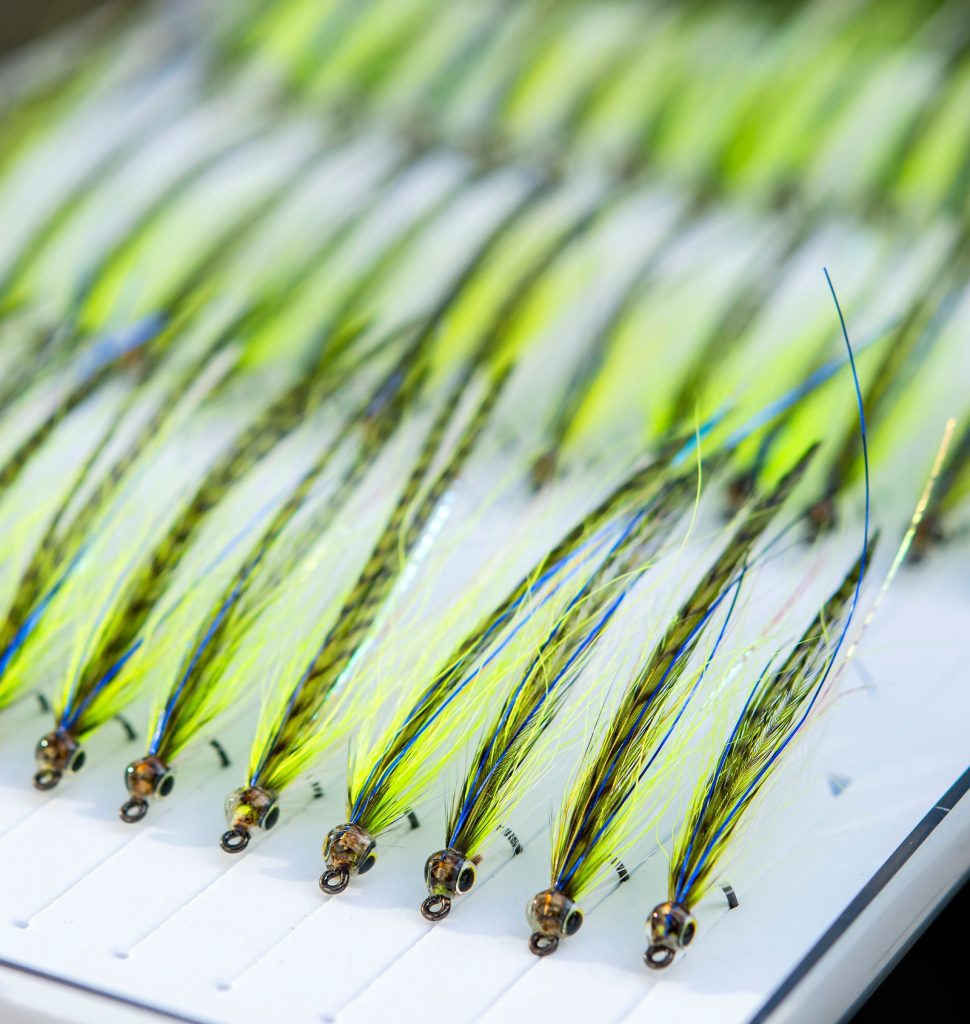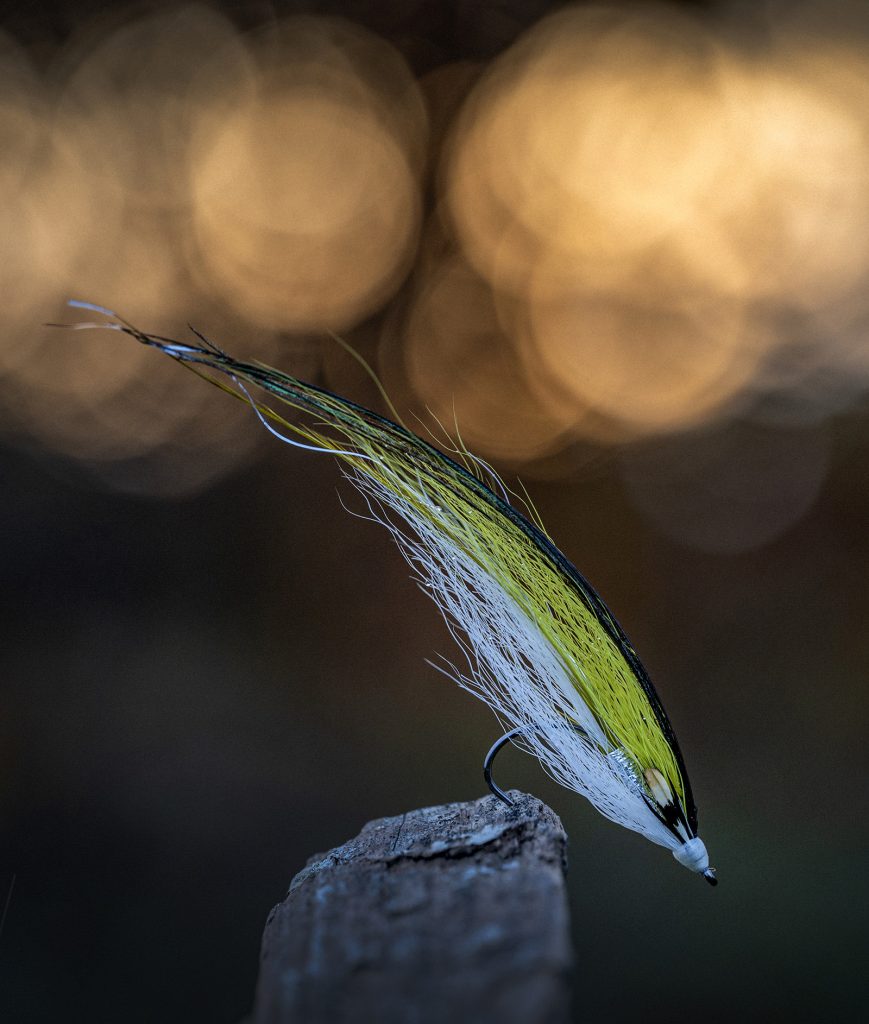
Flat wing flies are widely spread and I suspect well known by most fly fishers who fish for almost any predatory fish. Drawing on inspiration from the old long shank traditional streamers, Ken Abrames created a style of fly which is now know as a “flat wing”. The defining element is simply one or more feathers, usually in the tail of the fly, tied so they lie flat and not stand up. Like so many other influential fly tiers, Ken Abrames’ fly was based on keen observation of the bait fish the stripers eat in the North East of the USA.

Chartreuse Sand Eels tied by Jesper Lindquist Andersen.
Ken Abrames created the flat wing style in the 1970s and although the use use of hackles tied flat wasn’t new, Abrames developed the idea and technique much further into slender, mobile imitations that were easy to cast. An important feature. Particular about the design ideas he had, he wasn’t happy with the hackles he could obtain in the 1970s, so he began raising his own birds to get hackles that were narrower and had thinner stems.

Olive Marabou Flatwing tied by Darrin Krug.
Abrames’ flat wing flies are based on two materials – long, slender saddle hackles and buck tail. The combination of these two materials gives mobility, the profile needed and, what Abrames found important, the colour choices to accurately match the bait and this most of the time includes mixing several colours of both hackles and hair. For eyes he used what fly tiers have used for centuries – jungle cock.

Olive Sand Eel tied by Darrin Krug.
Today the style has evolved even further, first and mostly with the advent of epoxy and UV resins. Pete Gray, a fly tier also from the north easy of the US took the fully and began attaching the feathers using glue only, which has also now become quite common. Obviously incorporating eyes and heads epoxy and UV resin came early.
The tidal currents in the north eastern states can be quite strong and that became an element in Abrames’ design – to utilise that current and that was part of the reason he began using the long, slender hackles in the tail of the flies. This means that the flies are equally useful in running water as in stille water. The use of the long, thin saddle hackles has also found its way into Sunday Shadow style tube flies for Atlantic salmon.
Flat wing flies are really quite easy to tie. The one thing is that the saddle hackles can be difficult to keep flat, avoiding they stand up. The trick to making this easy is securing the hackle with firm wraps and them move a little backwards up the hackle to semi-loose wraps.
On our YouTube channel we have quite a few videos on tying different styles of flat wing flies. If you need some inspiration for your bait fish flies, take a look at this versatile style of fly.
